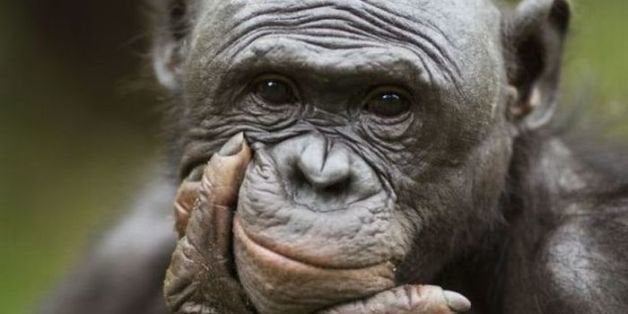
Research published today by the American Psychological Association has shown that chimpanzees prefer listening to West African akan and North Indian raga over listening to silence. What does this say about the evolutionary purpose of music?
Previous work by McDermott and Hauser showed that when tamarins and marmosets were given a choice between a lullaby played on a flute, an excerpt of German techno, or silence, they preferred silence. This new research was investigating whether non-Western music might provoke a different response in nonhuman primates. Would the different rhythmic structures and musical scales in non-Western music change preferences?
The study played African, Indian, and Japanese music near large chimp enclosures and looked at whether the animals spent time in places where the music was loud and clear or in places further from the loudspeakers, where it was quiet or inaudible. For African and Indian music the chimps spent significantly more time in places where the music could be heard. For Japanese music they more often went to places where the music was difficult or impossible to hear.
The researchers think the preference may be due to the rhythmic content of the music. The African and Indian pieces didn't have an obvious pulse to them that you could tap your foot along to, whereas the Japanese music had a strong regular pulse.
Study co-author Frans de Waal, Ph.D., of Emory University, commented, "Chimpanzees may perceive the strong, predictable rhythmic patterns as threatening, as chimpanzee dominance displays commonly incorporate repeated rhythmic sounds such as stomping, clapping and banging objects."
One reason for this sort of study is to try to understand the evolutionary basis for music. Experimental psychologist Steven Pinker famously described music as "auditory cheesecake," something that is pleasurable but has no adaptive function, arising as a byproduct of other evolutionary pressures, like the pressure that led to the development of language. But if music is purely a byproduct of the pressures that led to language, then why would chimpanzees show a preference for some types of music?
The number of scientific papers looking into the role of rhythm in music is surprisingly small. This bias is something that needs addressing if we are to fully understand why we make and love music.
